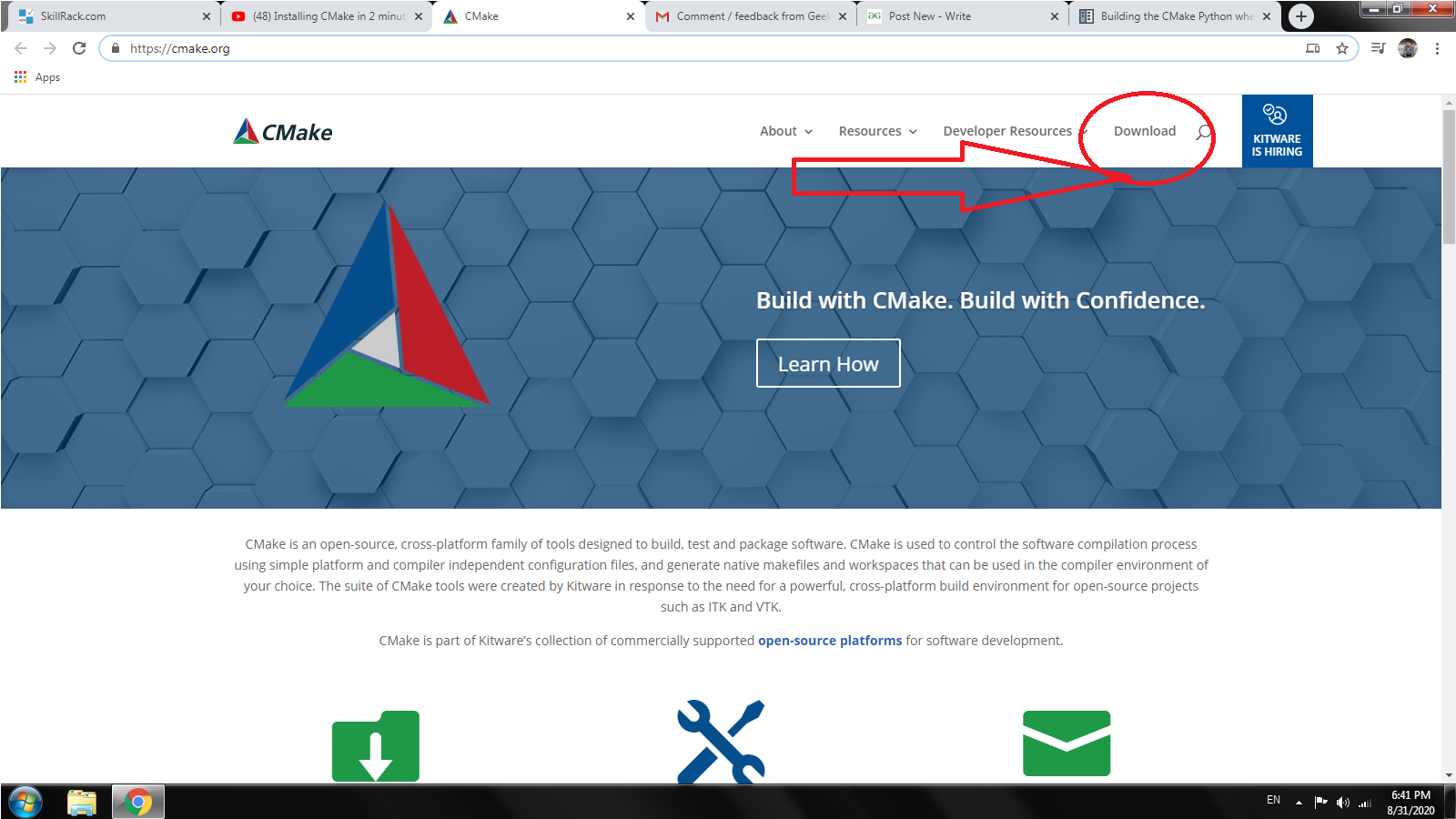

- #Cmake vs cmake install how to
- #Cmake vs cmake install install
- #Cmake vs cmake install software
- #Cmake vs cmake install windows
Every project comes with its own rules and nuances, and it can get quite painful every time you have a new collaborator.
#Cmake vs cmake install install
The reason we need “Make” is because it enables the end user to build and install your package without knowing the details of how it’s done. Simple stuff! If you didn’t understand it, go back and read the paragraph again because it’s important for the next part. When you write a program, you should write a makefile for it, so that it is possible to use “Make” to build and install the program.
#Cmake vs cmake install how to
This makefile lists each of the non-source files and how to compute it from other files. It gets its knowledge of how to build your program from a file called the “makefile”. The “Make” tool needs to know how to build your program. “Make” is a tool that controls the generation of executables and other non-source files of a program from the program’s source files. These executable files are the ones that carry out the actual task.
#Cmake vs cmake install software
The way in which we design a software system is that we first write code, then the compiler compiles it and creates executable files. Before getting into the differences, let’s first see what they are. It is important to understand the differences between them to make sure you don’t get yourself in trouble. What is this whole build process and why is it structured this way? What are the differences between CMake and Make? Does it matter? Are they interchangeable?Īs it turns out, they are quite different. A lot of people just follow the instructions blindly, not really caring about why we need to do things in a certain way. You are supposed to run “cmake” and “make” commands on the terminal. You must have seen those “CMakeLists.txt” files floating around. When you join a big company or start working on a project with a large codebase, there are all these builds that you need to take care of. Programmers have been using CMake and Make for a long time now. See here for older versions for others.įinally, run cmake -build. LLVM_v142 for Visual Studio 2019 and above. In some folder install llvm-utils: git clone Ĭhoose Visual Studio 2019 and 2nd option (specify native compilers). Using Visual Studio From PowerShell cmake -S. build -G "Ninja-Multi-Config"įrom the upper menu select Tools/Configure and follow these settings:Ĭhoose "Ninja Multi-Config" and Specify native compilers:įinally, run cmake -build. $env:CXX="C:\Program Files\LLVM\bin\clang++.exe"Ĭmake -S. Using Ninja From PowerShell $env:CC="C:\Program Files\LLVM\bin\clang.exe"

Reset your shell so environment variables are set properly (you can check if bin folders for each are added to your Path). Install choco if you don't have it: choco install ninja -y Switching between GCC and Clang/LLVM using CMake.What is the -D define to tell Cmake where to find nmake?.Please note that I have added LLVM to my search paths during setup:Īnd you can crosscheck the available "Platform Toolsets" in any VS project's property page: Check for working CXX compiler: C:/Program Files (x86)/LLVM/msbuild-bin/cl.exe - works Check for working CXX compiler: C:/Program Files (x86)/LLVM/msbuild-bin/cl.exe Check for working C compiler: C:/Program Files (x86)/LLVM/msbuild-bin/cl.exe - works Check for working C compiler: C:/Program Files (x86)/LLVM/msbuild-bin/cl.exe The CXX compiler identification is Clang 3.9.0 The C compiler identification is Clang 3.9.0 During the configuration process CMake will let you know which compiler it has found/taken.ĬMakeLists.txt cmake_minimum_required(VERSION 3.6) The part you need to know is setting the right toolset with the CMake -T"LLVM-vs2014" command line option.

#Cmake vs cmake install windows
The latest CMake 3.6 builds do have several integrated supported Clang build environments on Windows (e.g. You also need - in addition to the Clang compilers itself - an build/link environment for Windows.


 0 kommentar(er)
0 kommentar(er)
